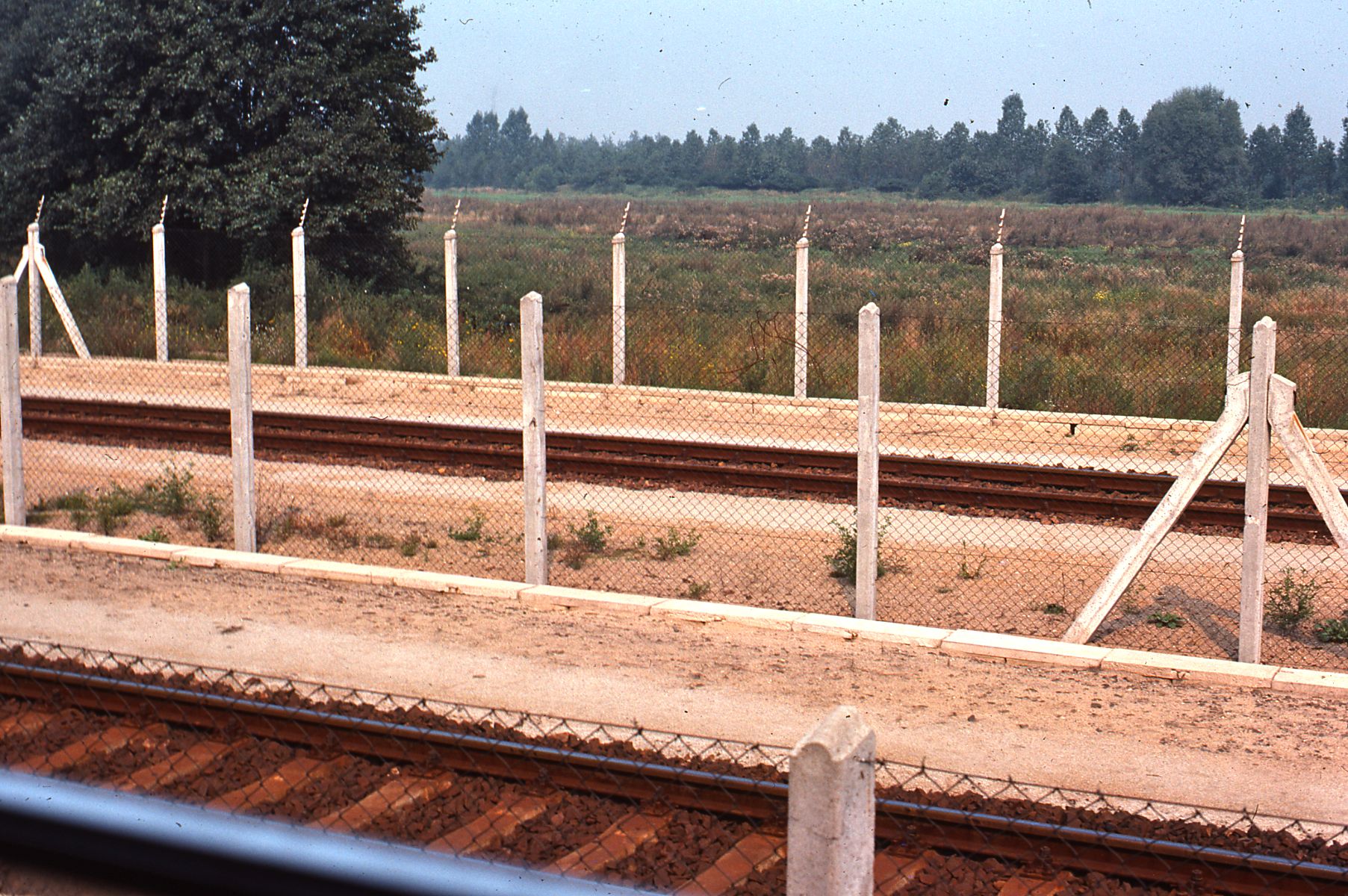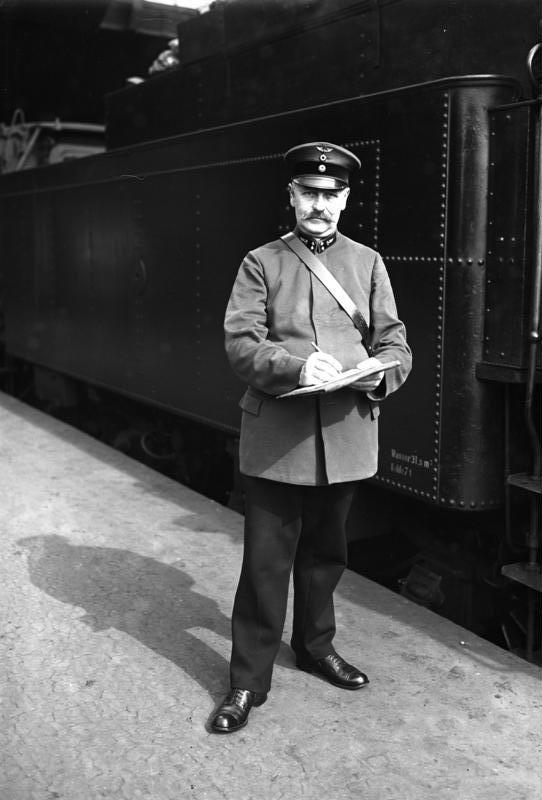|
Gütersloh Hauptbahnhof
Gütersloh Hauptbahnhof is the main railway station in Gütersloh in the German state of North Rhine-Westphalia. It is on the electrified, four-track main line from the Ruhr to Hanover, opened in 1847 as part of the trunk line of the former Cologne-Minden Railway Company. Services of the Warendorf Railway also run from Münster via Rheda-Wiedenbrück and the Hamm–Minden line to Gütersloh. Gütersloh Hauptbahnhof (Hbf) is classified by Deutsche Bahn as a category 4 station. In the station building there is a tourist bureau, where tickets can be purchased. There is also has a restaurant/bistro, a bakery, a mini-supermarket and a station bookshop. History Gütersloh‘s original station building was built between 1845 and 1847 by the Cologne-Minden Railway Company at the end of today's Kökerstraße. Two side wings were added in 1876/77 and the ''Königliche Eisenbahndirektion Hannover'' ( railway division of the Prussian state railways of Hanover) built another extensio ... [...More Info...] [...Related Items...] OR: [Wikipedia] [Google] [Baidu] |
Gütersloh
Gütersloh () is a city in North Rhine-Westphalia, Germany, in the area of Westphalia and the administrative region of Detmold. Gütersloh is the administrative centre for a district of the same name and has a population of 100,194 people. Geography Gütersloh lies in the Emssandebene, south-west of the Teutoburg Forest and on the north-eastern edge of the Westphalian Basin and has no significant points of elevation. The city's lowest point is above sea level on the river Ems near the Princess Royal Barracks and the highest point is above sea level in the eastern township of Friedrichsdorf. The border to Rheda-Wiedenbrück extends as part of the Rhedaer Forest, a large wooded area with predominantly conifers. The river Dalke flows through the city from east to west, crossing close to the Stadt Park as well as the city centre and river Ems. Gütersloh railway station is on the Hamm–Minden line. History The then-official district of Gütersloh included ... [...More Info...] [...Related Items...] OR: [Wikipedia] [Google] [Baidu] |
Deutsche Bahn
The (; abbreviated as DB or DB AG) is the national railway company of Germany. Headquartered in the Bahntower in Berlin, it is a joint-stock company ( AG). The Federal Republic of Germany is its single shareholder. describes itself as the second-largest transport company in the world, after the German postal and logistics company / DHL, and is the largest railway operator and infrastructure owner in Europe. Deutsche Bahn was the largest railway company in the world by revenue in 2015; in 2019, DB Passenger transport companies carried around 4.8 billion passengers, and DB logistics companies transported approximately 232 million tons of goods in rail freight transport. The group is divided into several companies, including ''DB Fernverkehr'' (long-distance passenger), '' DB Regio'' (local passenger services) and ''DB Cargo'' (rail freight). The Group subsidiary ''DB Netz'' also operates large parts of the German railway infrastructure, making it the largest rail network in ... [...More Info...] [...Related Items...] OR: [Wikipedia] [Google] [Baidu] |
Bundesbahn Central Offices
The Bundesbahn Central Offices (german: Bundesbahn-Zentralämter) or BZA in Minden and Munich was the department of the Deutsche Bundesbahn responsible for technological development and procurement of rail vehicles and infrastructure. Additionally, accounting and statistical services, as well as technical standards for the West German state railway system, were provided by the BZA. After the formation of the Deutsche Bahn AG DB Systemtechnik inherited responsibility for technological development and procurement. History After 1945, the functions of the former Reichsbahn Central Offices (''Reichsbahn-Zentralämter'', RZA) in Berlin were transferred first to Göttingen, then from 1950 to Minden and in parallel also at Munich. From 1 January 1994 the BZA was incorporated into the new corporate structure of the Deutsche Bahn. Minden was the centre for the Research and Technology activities. Later, further research activities of the Deutsche Bahn AG took place in Munich at the ... [...More Info...] [...Related Items...] OR: [Wikipedia] [Google] [Baidu] |
Bahnhof Gütersloh Gleis 2
Bahnhof (German for "railway station") is a Swedish Internet service provider (ISP) founded in 1994 by Oscar Swartz in Uppsala, Sweden, and is the country's first independent ISP. Today the company is represented in Stockholm, Gothenburg, Uppsala, Borlänge, Malmö and Umeå. WikiLeaks used to be hosted in a Bahnhof data center inside the ultra-secure bunker Pionen, which is buried inside the White Mountains in Stockholm. History Bahnhof was founded in 1994 by Oscar Swartz. It was one of Sweden's first ISPs. The company is publicly traded since December 2007 under the name BAHN-B (Aktietorget). On 11 September 2008, Bahnhof opened a new computer center inside the former civil defence center Pionen in the White Mountains in Stockholm, Sweden. Controversies On 10 March 2005, the Swedish police confiscated four servers placed in the Bahnhof premises, hoping to find copyrighted material. Although these servers were located near Bahnhof's server park (in a network lab area) the c ... [...More Info...] [...Related Items...] OR: [Wikipedia] [Google] [Baidu] |
Hamm (Westfalen) Station
Hamm (Westf) Hauptbahnhof (often abbreviated Hamm (Westf) or simply Hamm (W)) is a railway station situated in the city of Hamm in the German state of North Rhine-Westphalia. It is notable for its station building inspired by art deco and Gründerzeit building styles. The station is one of the important InterCityExpress rail hubs in the eastern Ruhr area and is among the high-profile buildings of Hamm. Until the decline of rail freight after the Second World War, it featured one of Europe's largest marshalling yards. History The station at Hamm was opened on 2 May 1847, when the first train of the Köln-Mindener Eisenbahn reached the city. It had been planned from the very beginning to make Hamm a railway hub, therefore the line to Münster (1848) and the line to Paderborn via Soest (1850) were opened soon thereafter. Both lines were built and operated by the Königlich-Westfälische Eisenbahn. Finally, in 1866, the Bergisch-Märkische Eisenbahn connected their line to Hagen v ... [...More Info...] [...Related Items...] OR: [Wikipedia] [Google] [Baidu] |
DB Class E 10
The class E 10 is an electric locomotive of the Deutsche Bundesbahn, introduced in 1952. It belongs to the '' Einheits-Elektrolokomotiven'' (standardised electric locomotives) program and was built for express passenger service. In 1968 the series was redesignated as class 110 (E10) and class 112 (E10.12). In 1988 the last series of class 112 locomotives were designated as class 114, and in 1991 the remaining locomotives of class 112 were designated as class 113. In 2006 38 locomotives were designated as class 115. Development history In 1950, the Deutsche Bundesbahn decided to develop two base types of electric locomotives with largely standardised components: A twelve-wheel (UIC: Co'Co') freight train locomotive as successor for the Class E 94, and an eight-wheel (UIC: Bo'Bo') general purpose electric locomotive as successor for the Class E 44. As a new feature the engineers should be able to be seated, whereas formerly they had to stand in order to boost their attentiven ... [...More Info...] [...Related Items...] OR: [Wikipedia] [Google] [Baidu] |
Deutsche Bundesbahn
The Deutsche Bundesbahn or DB (German Federal Railway) was formed as the state railway of the newly established Federal Republic of Germany (FRG) on 7 September 1949 as a successor of the Deutsche Reichsbahn-Gesellschaft (DRG). The DB remained the state railway of West Germany until after German reunification, when it was merged with the former East German Deutsche Reichsbahn (DR) to form Deutsche Bahn, which came into existence on 1 January 1994. Background After World War II, each of the military governments of the Allied Occupation Zones in Germany were ''de facto'' in charge of the German railways in their respective territories. On 10 October 1946, the railways in the British and American occupation zones formed the ''Deutsche Reichsbahn im Vereinigten Wirtschaftsgebiet'' (German Imperial Railway in the united economic area), while on 25 June 1947, the provinces under French occupation formed the Südwestdeutsche Eisenbahn. With the formation of the FRG these succe ... [...More Info...] [...Related Items...] OR: [Wikipedia] [Google] [Baidu] |
Deutsche Reichsbahn
The ''Deutsche Reichsbahn'', also known as the German National Railway, the German State Railway, German Reich Railway, and the German Imperial Railway, was the German national railway system created after the end of World War I from the regional railways of the individual states of the German Empire. The ''Deutsche Reichsbahn'' has been described as "the largest enterprise in the capitalist world in the years between 1920 and 1932"; nevertheless its importance "arises primarily from the fact that the Reichsbahn was at the center of events in a period of great turmoil in German history". Overview The company was founded on 1 April 1920 as the ("German Imperial Railways") when the Weimar Republic, which still used the nation-state term of the previous monarchy, (German Reich, hence the usage of the in the name of the railway; the monarchical term was ), took national control of the German railways, which had previously been run by the German states. In 1924 it was reorganise ... [...More Info...] [...Related Items...] OR: [Wikipedia] [Google] [Baidu] |
Neoclassical Architecture
Neoclassical architecture is an architectural style produced by the Neoclassical movement that began in the mid-18th century in Italy and France. It became one of the most prominent architectural styles in the Western world. The prevailing styles of architecture in most of Europe for the previous two centuries, Renaissance architecture and Baroque architecture, already represented partial revivals of the Classical architecture of ancient Rome and (much less) ancient Greek architecture, but the Neoclassical movement aimed to strip away the excesses of Late Baroque and return to a purer and more authentic classical style, adapted to modern purposes. The development of archaeology and published accurate records of surviving classical buildings was crucial in the emergence of Neoclassical architecture. In many countries, there was an initial wave essentially drawing on Roman architecture, followed, from about the start of the 19th century, by a second wave of Greek Revival architec ... [...More Info...] [...Related Items...] OR: [Wikipedia] [Google] [Baidu] |
Prussian State Railways
The term Prussian state railways (German: ''Preußische Staatseisenbahnen'') encompasses those railway organisations that were owned or managed by the State of Prussia. The words "state railways" are not capitalized because Prussia did not have an independent railway administration; rather the individual railway organisations were under the control of the Ministry for Trade and Commerce or its later offshoot, the Ministry for Public Works. The official name of the Prussian rail network was ''Königlich Preußische Staatseisenbahnen'' (K.P.St.E., "Royal Prussian State Railways") until 1896, ''Königlich Preußische und Großherzoglich Hessische Staatseisenbahn'' (K.P.u.G.H.St.E., " Royal Prussian and Grand-Ducal Hessian State Railways") until the end of the First World War, and ''Preußische Staatsbahn'' (P.St.B., "Prussian State Railway") until its nationalization in 1920. A common mistake is the use of the abbreviation K.P.E.V. in supposed reference to a mythical "Royal Prussian ... [...More Info...] [...Related Items...] OR: [Wikipedia] [Google] [Baidu] |
Railway Divisions In Germany
In Germany and Austria, the running of railway services for a railway administration or the regional network of a large railway company was devolved to railway divisions, variously known as ''Eisenbahndirektionen (ED), Bundesbahndirektionen (BD)'' or ''Reichsbahndirektionen (RBD/Rbd)''. Their organisation was determined by the railway company concerned or by the state railway and, in the German-speaking lands at least, they formed the intermediate authorities and regional management organisations within the state railway administration's hierarchy. On the formation of the Deutsche Bahn AG in 1994 the system of railway divisions (''Eisenbahndirektionen'') in Germany was discontinued and their tasks were transferred to new "business areas". Germany State railway divisions Incorporation into the state government The first railway divisions of the various German state railways (known as ''Länderbahnen''), usually reported to a specific government ministry. For example, in Prus ... [...More Info...] [...Related Items...] OR: [Wikipedia] [Google] [Baidu] |








_-_facade_on_Piazza_dei_signori.jpg)
